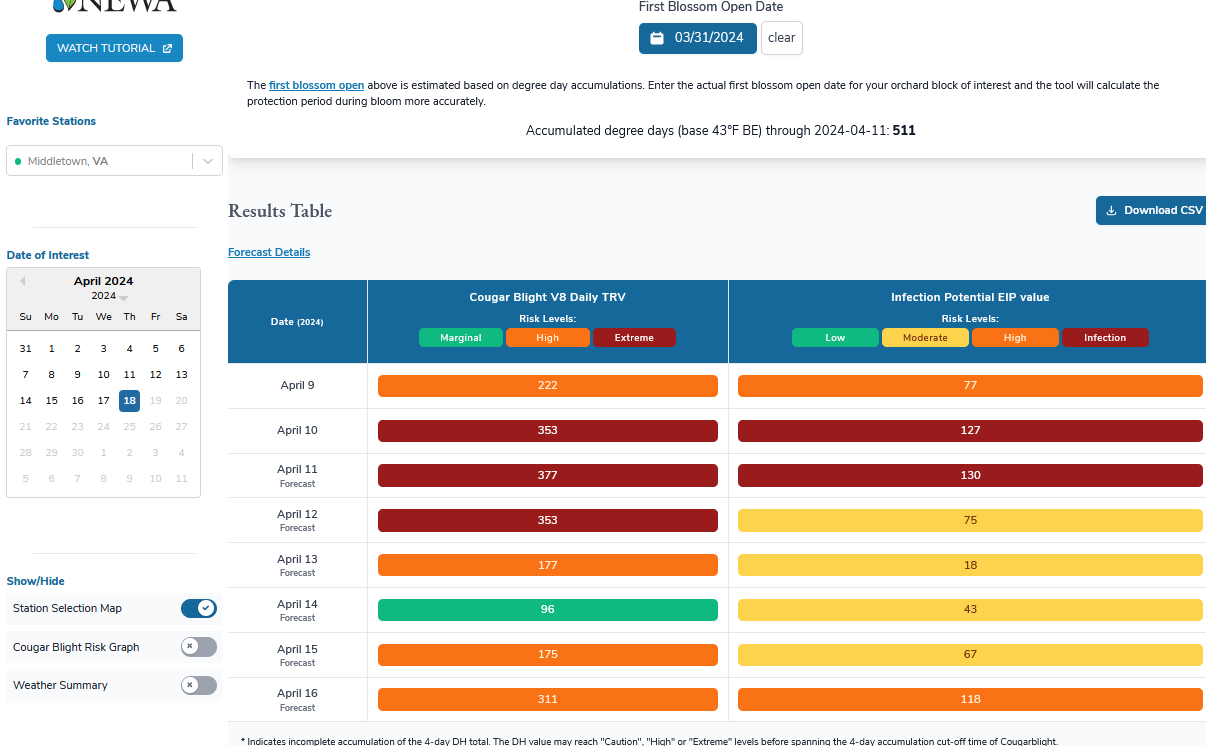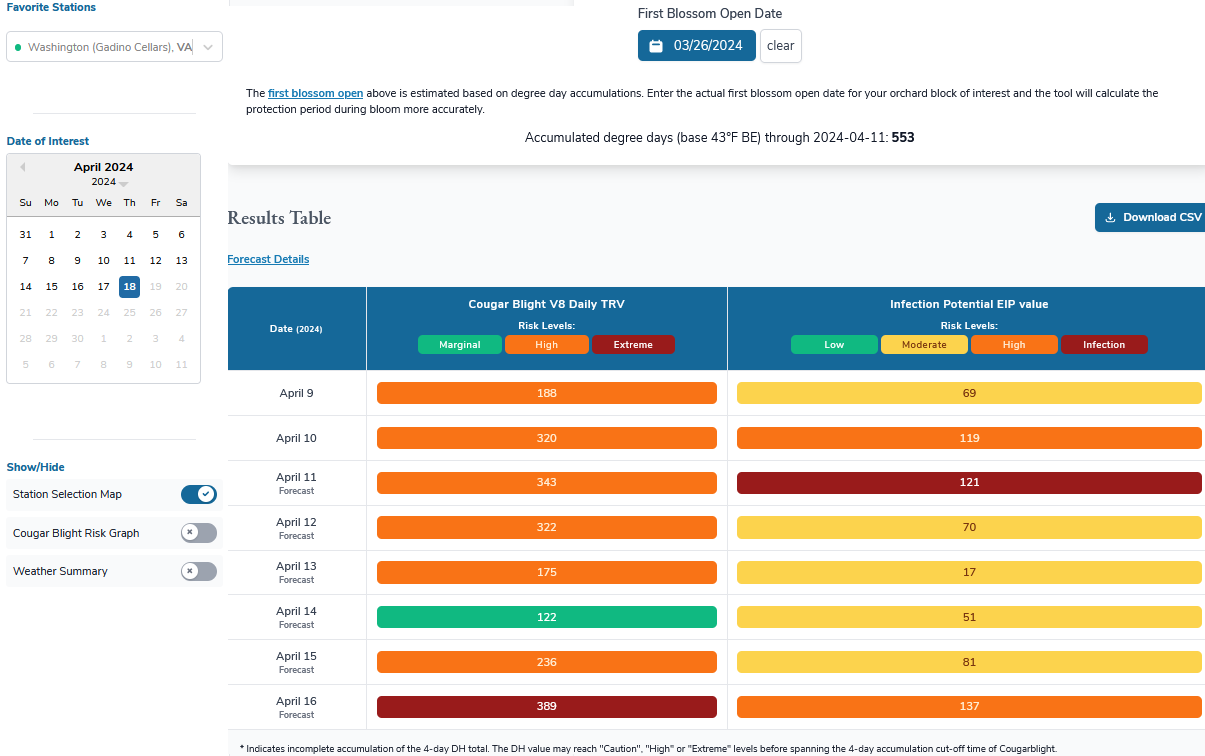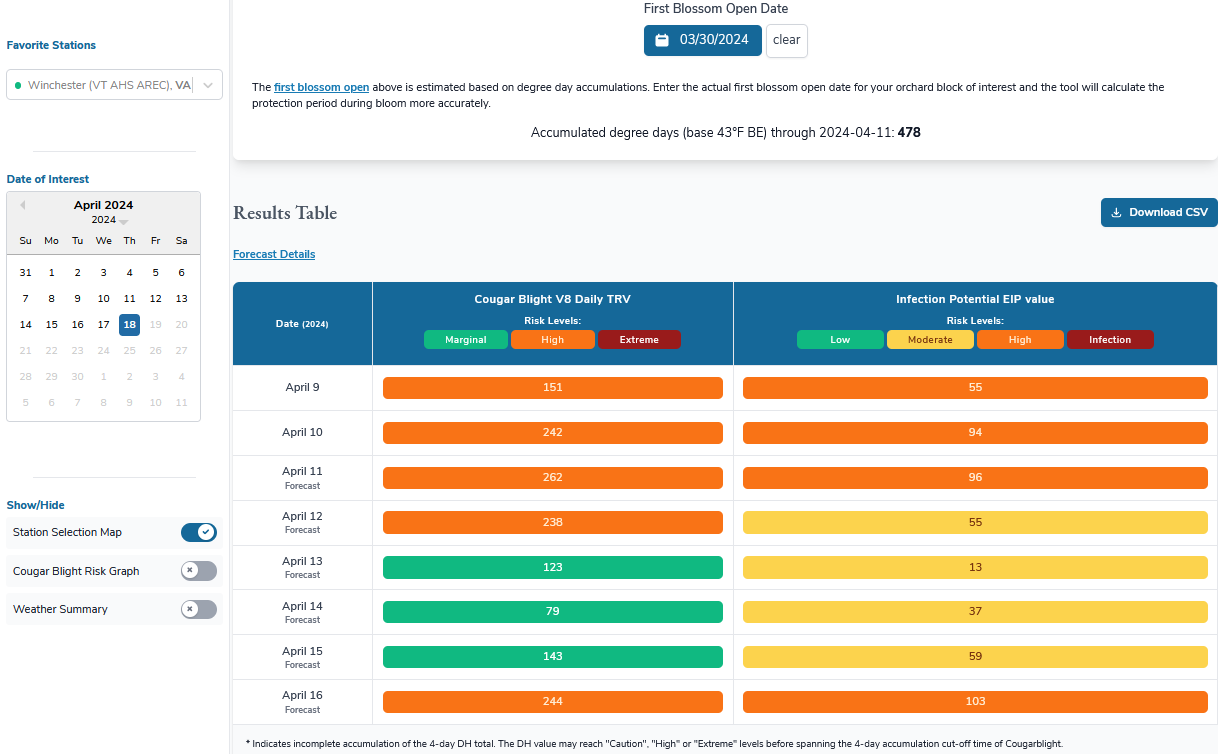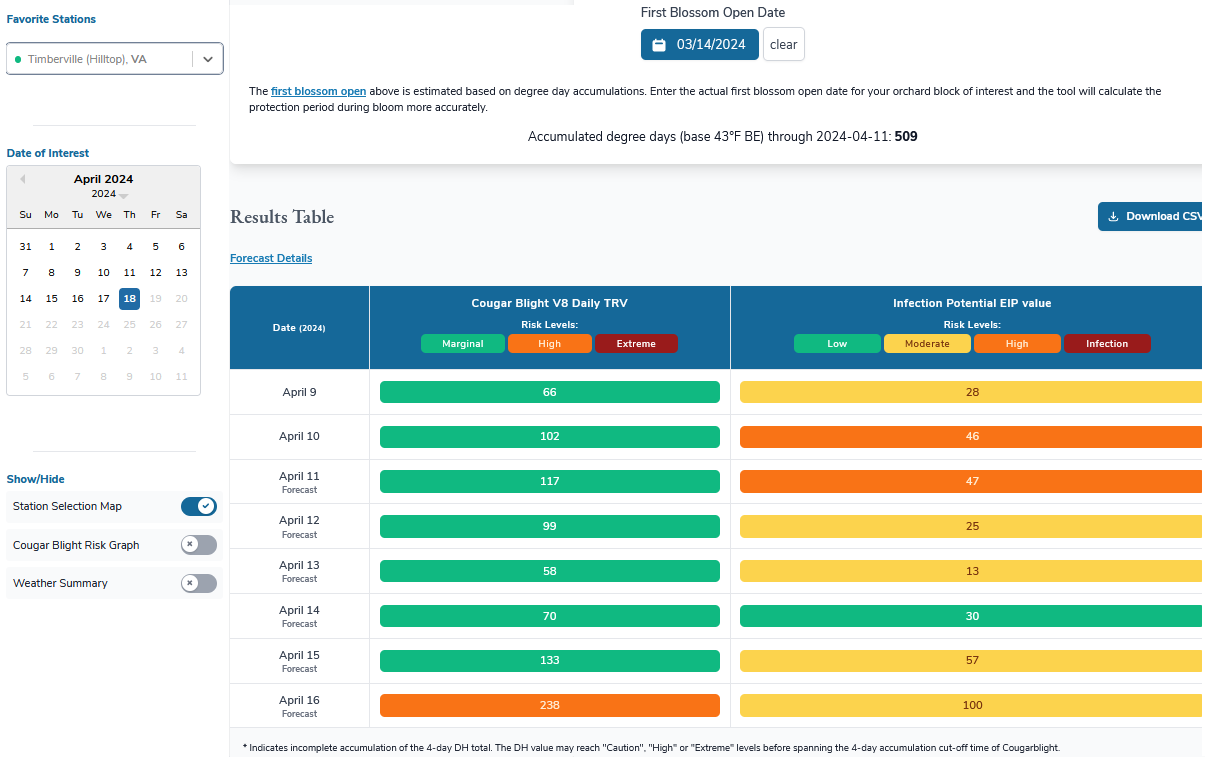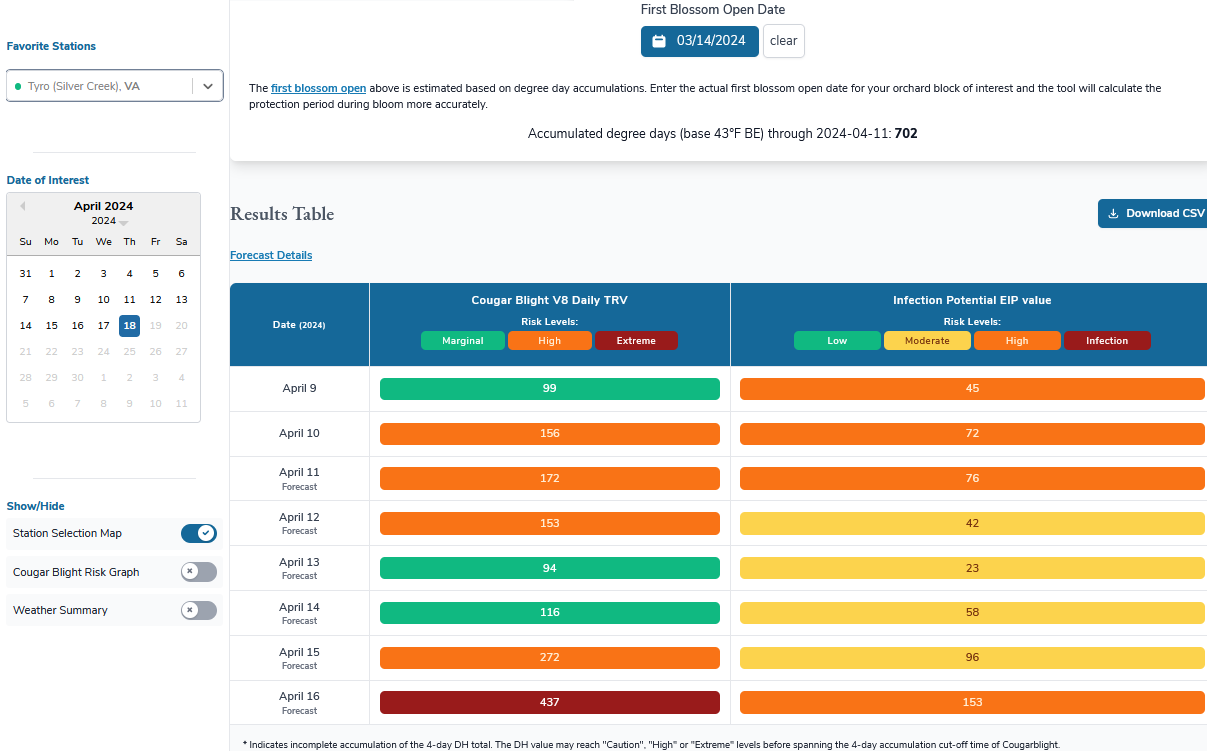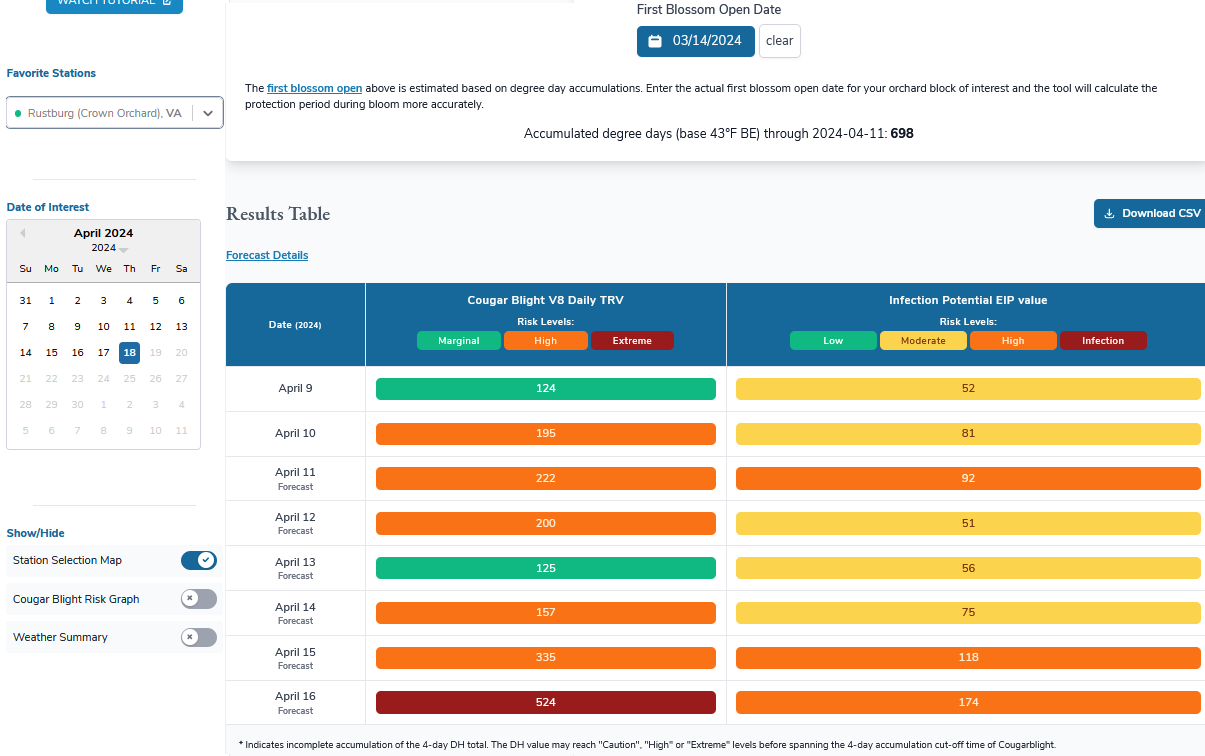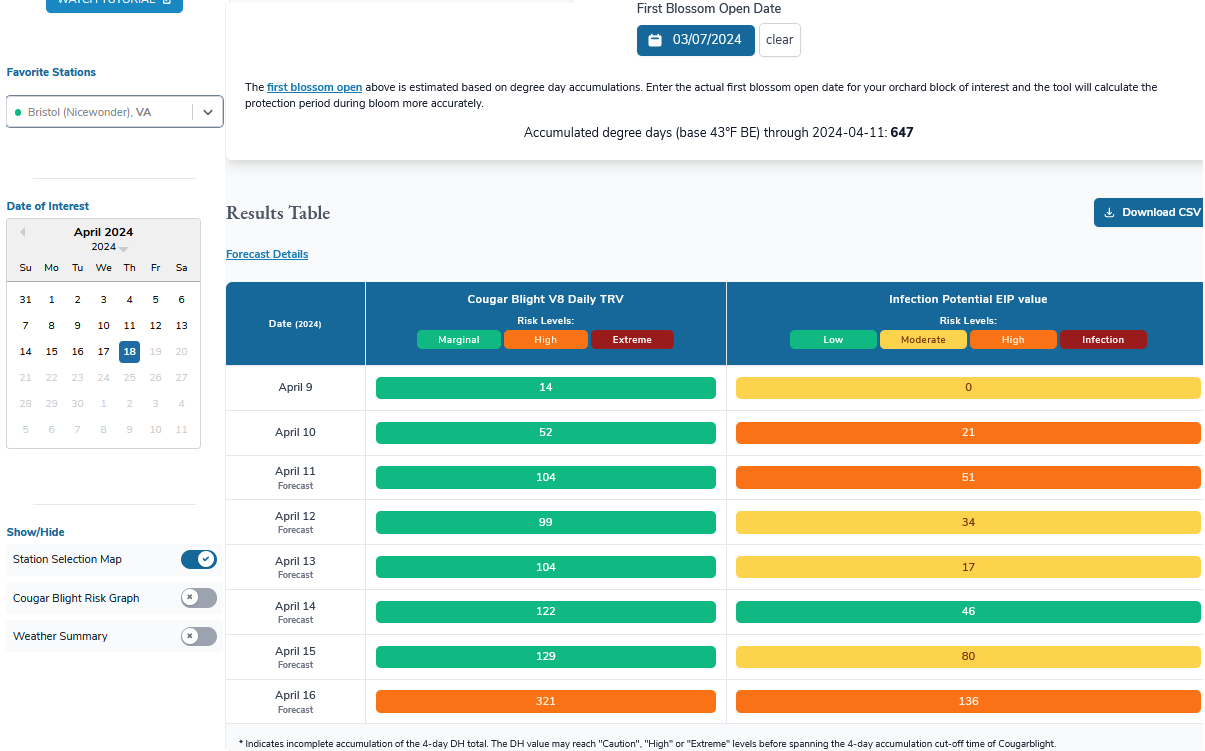(I) Fire Blight Model Change: Few Locations Now Predict Infection on 10th and/or 11th April, (II) EIP Will Go Over 100 on 15 April – Take Caution!
(I) As per the below provided screenshots, the EIP model in NEWA (EIP stands for Epiphytic Infection Potential) has of this morning changed in few locations for the 10th and/or 11th April as a fire blight Infection event. Therefore, locations like Middletown an Washington (Gadino Cellars), please see below images, should apply streptomycin plus Regulaid or LI700 today in any apple and pear orchards with open flowers (for other sites near these locations: please look at your model as the weather forecast that feeds into the fire blight model changes frequently this time of the year). However, for the rest of the Virginia, the EIP value is close but not at 100 for 10th and 11th April, not warrantying a streptomycin application as not all necessary conditions for infection have been met. I understand if you had fire blight symptoms last year, that you want to apply protection today or tomorrow. That is justified. Keep in mind that your weather stations we us to look at the NEWA EIP fire blight model must be serviced every two years for accuracy of collecting weather data. Hence, we hope that the stations we present the outputs for below are accurate as if they were serviced every 2 years and are giving correct fire blight prediction data. For all screenshots source is: https://newa.cornell.edu/fire-blight/
(II) As of 11:45 AM on 11 April the EIP fire blight model predicts we will reach EIP of 100 and over (see images below for the day of 15 April) but Infection is not reported (EIP number field did not change from Orange to Dark red). This forecast is beyond the 48 h, thus potentially subject to change due to instability of weather forecast models, so keep looking a the model twice daily. IF the EIP prediction stays the same as it is right now at 100 and above, if you decide to spray your orchard on the 14, 15 or 16 April for applying fungicides, make sure you add streptomycin plus surfactant to your spray mix as your spray water can provide the necessary wetting event and trigger the infection by fire blight on flowers at this high EIP value. For all screenshots source is: https://newa.cornell.edu/fire-blight/
SPRAY OPTION 1: preventive streptomycin – cover before the predicted wetting event any apple and pear trees in bloom with streptomycin: Harbor, or Agrimycin 17 WP, or Fire Wall 17 WP at 1.5 to 3 lb per acre (24 – 48 oz/A) plus LI 700 at a penetrating rate or use Regulaid instead of LI700. Based on the Regulaid label, you could use 2 pints penetrating rate. FireWall changed its formulation to FireWall 50WP and the rate to use this higher concentrated material is 8 – 16 oz/A. If rain does not occur, you can trigger the infection at EIP 100 or above if you provide water with a fungicide spray application, so if you are applying a previously planned fungicide application – add streptomycin to it. Option one is a must in large acreage apple and pear farms.
SPRAY OPTION 2: Only if you must, i.e. you want to see if model was correct, use OPTION 2: if you have a smaller acreage farm with apples or pears in bloom, you could wait and see will you get the wetting event or not on 11th April, because the showers might be spotty and occur on one location and not on the other. So, if you get the rain events on the 11th April, infection will occur and you will need to cover with streptomycin up to 24 h after the first rain event has started. Apply streptomycin in mix with Regulaid or LI700 up to 24 h after the infection rain event started (kick-back mode of application). In case you will use LI700 instead of Regulaid, use a penetrating action rate for LI700. If rain does not occur, infection will not occur, unless you provide water with a fungicide spray application near the infection dates, which can and will trigger the infection – so if you plan fungicide application add streptomycin to it.
You can add your fungicides to streptomycin to make the spray more economical, and keep the SI (DMI) fungicides + mancozeb (3 lb/A) about every 14 days for rust and scab. In between you can use mancozeb + either Fontelis, Sercadis, Miravis or Excalia (SDHI fungicides) for scab and powdery mildew. WARNING: If you used captan recently, which would not be my choice at this time of the year (use mancozeb instead), DO NOT add Regulaid or LI700 (at penetrating rate) to streptomycin for this bloom spray against fire blight.
